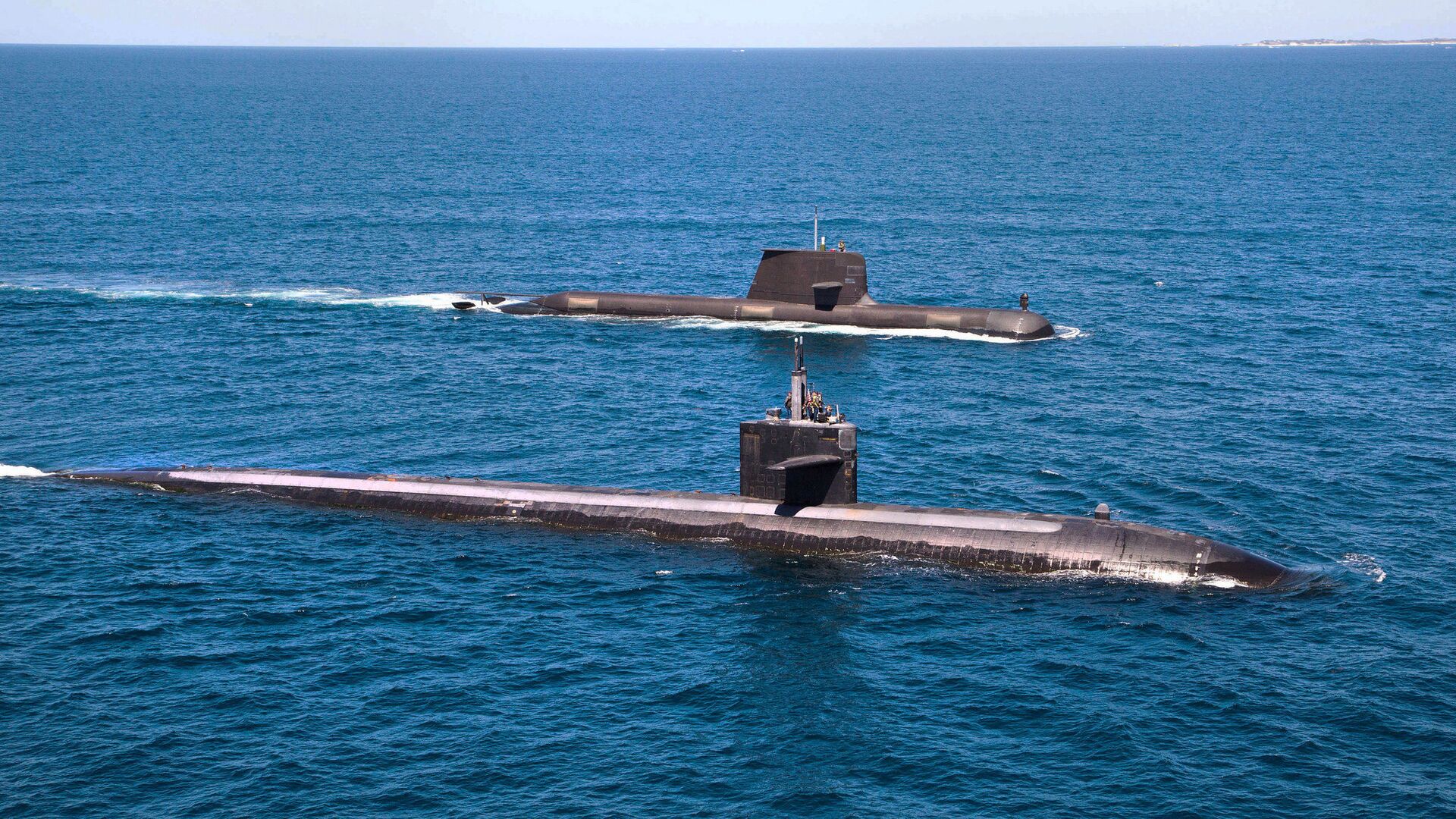Australia’s Defence Minister Claims to Have 'Open Mind' Over Filling AUKUS-Created 'Capability Gap'
12:08 GMT 06.06.2022 (Updated: 15:19 GMT 28.05.2023)
Subscribe
The previous government scrapped a contract with France’s Naval Group last September, which would have given Canberra advanced diesel-electric submarines by the end of the decade. Instead, it opted for nuclear subs developed by Australia, the US and the UK under the AUKUS security arrangement.
Australia's new defence minister, Richard Marles, has claimed to have an “open mind" over filling the expected “capability gap” in the Royal Australian Navy (RAN) created by the AUKUS pact.
Speaking Monday, he expressed concern over the 2040 deadline for Canberra to get its first AUKUS-sponsered nuclear submarines. The RAN is reportedly set to start retiring its current fleet of Collins-class diesel-electric attack submarines before the end of this decade.
"What is clear is that the successor submarine to Collins coming into place in the 2040s is too far away. We need to be looking at how we bridge what would evidently be a capability gap, if that’s what we’re talking about,” Marles said during an interview with the Australian Broadcasting Corporation (ABC) on Monday, when asked about how he would fill the “capability gap” created by the 2040 delivery deadline of AUKUS pact submarines.
“And it’s important to state upfront that there is no more important platform that Australia has in terms of shaping its strategic circumstances, than having a capable long-range submarine,” the newly sworn-in defence minister added.
Under the AUKUS pact unveiled last September, the US and the UK are due to supply Australia with advanced technology to domestically develop nuclear submarines.
In December, a report by a leading Australian think tank claimed that the eight submarines will cost Canberra around US$121 billion and won’t be available until 2040.
Marles said that having an interim submarine and successor to Australia’s current fleet was his “number one priority” and “critically important”.
He further blamed the previous Australian governments headed by the opposition Liberal Party for putting Canberra in a “disgraceful” situation.
“I don’t have all the answers to what we need to do in terms of meeting the capability gap that has arisen by the last nine years of the Abbott-Turnbull-Morrison government and its handling of submarines,” Marles told the Australian state broadcaster.
The previous Australian government rejected the idea of an interim submarine, with former Defence Minister Peter Dutton stating last month that it wasn’t “in our national interest to pretend we can have a third class of submarine”, as he expressed confidence that the current Collins-class fleet would last until 2040.
Equally, RAN Vice-Admiral Mike Noonan said last month that he was “very confident that the Collins-class submarine will remain a very capable submarine that will continue to meet Australia's needs until we see the nuclear-powered submarine”.
Australia’s Fleet Will be ‘Obsolete’ by 2040
Marles’ warning about Canberra’s fleet comes a week after a group of former Australian submariners published an “expression of grave concern” over the potential capability gap in the country’s naval capabilities.
“The Collins submarines start reaching the end of their original planned lives in the mid-2020s (…) Meanwhile, the existing Collins submarine capability must be kept going from the current end of life until something new arrives—a minimum of 15 years,” they said.
“The fact is that arguably both must be done, or the Collins submarine will be retiring at the age of 45 and beyond. They will certainly be materially obsolete, worn out and even harder to support by then,” the letter stated.
The veterans recommended that an “evolved” Collins design with “essential updates” remained the “only viable option” for the Australian Navy.



